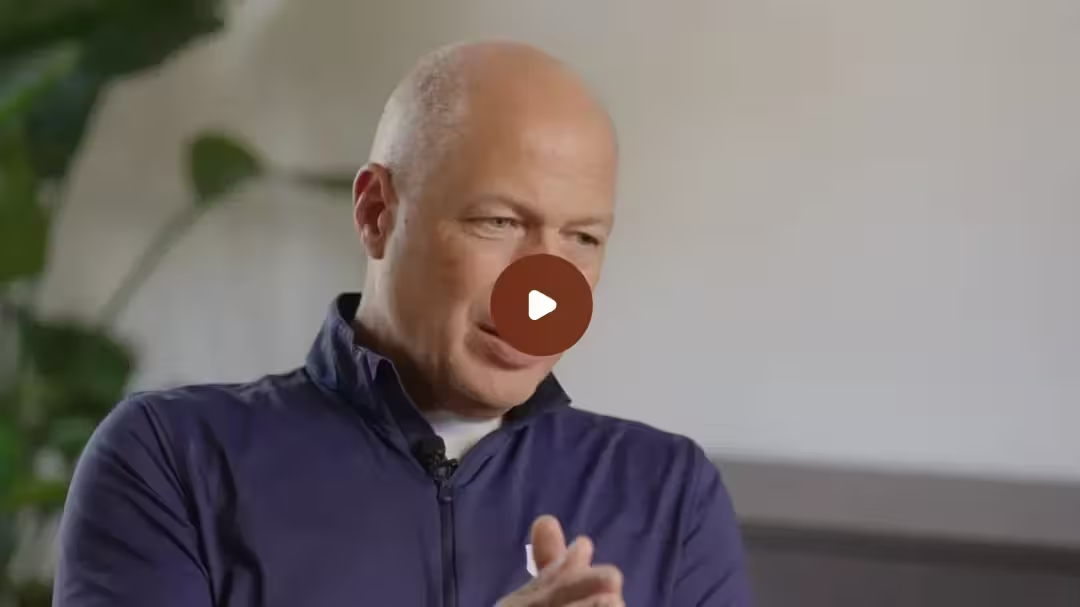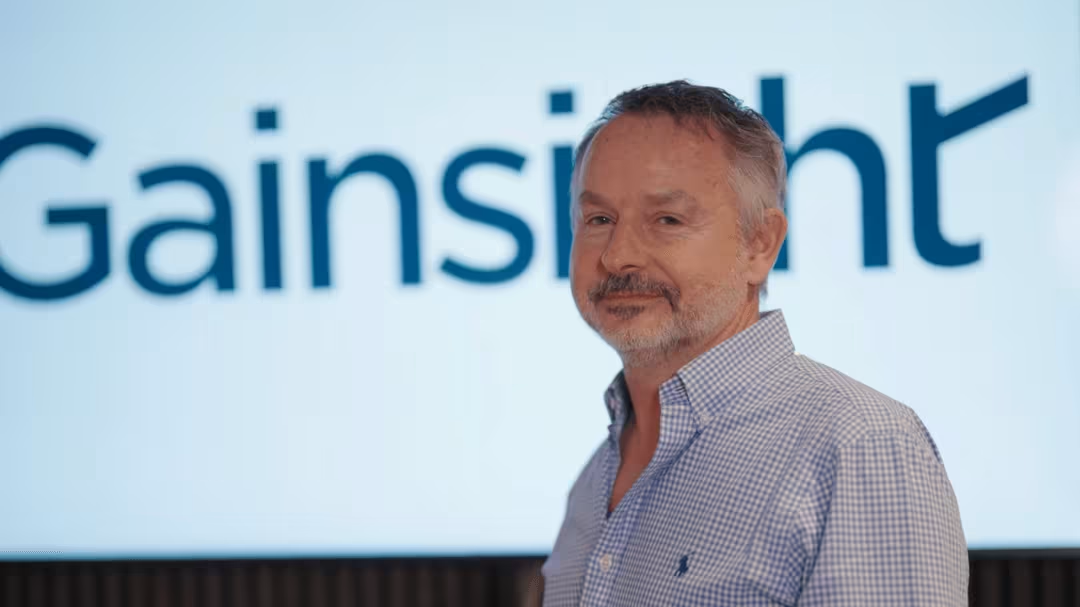We asked 8 CFOs from top PE-backed firms about how they are approaching sales efficiency in 2026.
For more than a decade, the story of sales success was written in one language… growth. Boards celebrated top-line expansion, investors rewarded fast-scaling revenue, and companies hired their way to momentum.
As we round out 2025, the mood in the market feels different. The investors who once pushed for speed are now looking for efficiency.
The boardroom focus has shifted from “How big can we get?” to “How productive are we while getting there?”
Across industries, CFOs are leading that shift. From tech to infrastructure, they’re recalibrating how sales success is measured, replacing volume-based targets with efficiency ratios - revenue per rep, ROI per pound spent, CAC payback, and cash conversion. Every pound spent, every hour worked, and every lead generated is required to deliver a measurable return.

As Bob Gold, former CFO of AM General and multiple private equity portfolio companies, explained on the Next Exit podcast:
“At the end of the day, it’s cash that drives the business. Adjusted EBITDA has so many adjustments in it that it’s nothing close to describing the health of the company.”
Boards want predictability, not just performance
In past market cycles, growth could forgive volatility. Today, volatility kills confidence.
Keith Taylor, CFO of $100 billion data infrastructure giant Equinix, captured this changing dynamic on Next Exit:

“The easiest way to describe it is that demand is unsatiable, and the supply is limited. That gives us a lot of confidence that we need to continue to invest in the future, but be very disciplined about it.”
That word, “disciplined”, runs through almost every CFO conversation from the past year.
Boards now expect sales forecasts that can withstand scrutiny. They want confidence intervals, not hopeful projections. Inconsistent conversion data or a single missed forecast can erode investor trust overnight.

John Henderson, Deputy CFO at MIQ, noted during his Next Exit episode:
“If you’re making any decisions or having to explain something to the board, you want to make sure you have the detail. But the flip side is you can’t drown the business in reporting. The balance is cadence, rhythm, transparency, and accuracy.”
The modern CFO sits at the intersection of finance and sales operations, ensuring those rhythms align. When sales pipelines, forecasting models, and financial plans operate from one version of the truth, the board gains predictability, and that predictability is now the ultimate performance metric.
Rep productivity is the new revenue
In past funding cycles, companies that were hiring rapidly (increasing their headcount) were seen as ambitious and “hot” by investors. Growth in team size was an easy proxy for growth potential and success.
Today, investors care less about how many people a company hires and more about how much revenue each salesperson generates.
Sun Choi, a consulting CFO for growth-stage SaaS firms, explained on Next Exit:

“Companies are being very efficient today. Boards want to understand how much ARR we can squeeze out of each FTE. ARR per rep, CAC payback, gross margin, those are the numbers that tell the story now.”
This shift has also redefined how sales leaders are managed. In private equity-backed environments, especially, every quota-carrying employee must justify their seat through contribution margin.

Neil Hodson, former COO and CFO of multiple public and private businesses, said on Next Exit:
“You can have a lot of salespeople selling a lot of stuff, but if your contribution is incredibly limited or negative, what’s the point? You’re running a charity for salespeople.”
It’s blunt, but accurate. The new growth playbook rewards efficiency over expansion.
Many of Kluster’s customers, including Gainsight, have seen firsthand how visibility and accountability can transform sales efficiency. By consolidating fragmented data into one platform, Gainsight’s revenue teams gained end-to-end insight into pipeline creation and business health, a model many CFOs now view as essential.

“The flexibility of Kluster is amazing. Everybody’s using it every day, to track the business, coach teams, and drive accountability and visibility for our leaders.”
True efficiency is built into a team’s habits. With the right visibility, managers can guide their teams better, make smarter investments, and scale with purpose.
Efficiency is financial discipline disguised as a sales strategy
Look beneath any strong sales efficiency ratio and you’ll find rigorous financial discipline.
Marie Charpentier, CFO of Accredit Solutions, who has operated under both VC and PE boards, said on Next Exit:

“Venture capital is more about growth. Private equity is more about EBITDA. They want to see operational efficiency, cash discipline, and proof that every investment matches strategy.”
That discipline manifests as capital allocation: fewer bets, clearer ROI thresholds, and faster course correction when numbers deviate.
Bob Gold echoed this from his time managing PE portfolios:

“When you’re fortunate enough to be generating cash, how you spend it is equally important. Developing a discipline around return on capital is critical.”
In 2026, those return models will no longer be finance-only artefacts. They’ll define the sales strategy itself.
Every campaign, enablement tool, and territory expansion must prove yield. If marketing spend doesn’t improve conversion ratios, it’s cut. If headcount doesn’t increase ARR or deal velocity, it’s paused. The margin for unmeasured investment has all but vanished.
Forecast accuracy has become a trust metric
In an environment where investors have less tolerance for surprises, forecast credibility has become a measure of leadership competence.

Richard Simons, a serial private-capital CFO, put it plainly on Next Exit:
“From the minute you come into the CFO seat, you need to have one eye on the exit. All of the decision-making and board-level discussions have that same mentality. It’s all to do with generating and executing against the value-creation plan.”
When a company’s forecast is grounded in clean data and systemised cadence, it builds trust with investors and within the leadership team itself.
That’s why CFOs like Sun Choi start every engagement by rebuilding the data foundations:
“The first step when I join a company is to get the books right. If your historicals aren’t right, then your forecast will probably be wrong.”
Data discipline is now the connective tissue between sales and finance. Without it, even the most sophisticated go-to-market engine eventually loses board confidence.
Data-driven efficiency: from dashboards to decisions
For mature companies, the real challenge lies in making data meaningful and aligned.

Michael Vigario, CFO of North America at ACT Commodities, said on Next Exit:
“The better the integration, the fewer manual touchpoints and the more accurate your numbers are. At first, it took us longer to get the numbers, but eventually, through integrations and system build-outs, we could do it daily.”
When data travels freely between CRM, ERP, and forecasting tools, sales efficiency becomes something you can measure instantly.

That’s the reason many high-growth companies partner with Kluster: to turn raw pipeline data into forward-looking intelligence. In one example, Altrata transformed its forecasting process with Kluster, replacing manual reporting and fragmented insights with a single, trusted view of performance.
The result was complete data confidence across sales and finance, giving leadership the clarity to make faster, smarter decisions.
Why this moment feels different
Efficiency isn’t new. Every downturn prompts talk of “doing more with less.” In 2026, doing more with less will be the new standard for business.
Three forces have converged to make efficiency a permanent performance pillar:
- Capital costs are rising. Cheap money masked inefficiency. High interest rates expose it.
- Data visibility has matured. Boards can now see inefficiency in real time, and they do.
- AI-powered forecasting has raised the bar. When predictive analytics can model outcomes in seconds, “best guesses” are no longer tolerated.
CFOs are at the heart of this transformation, but the cultural adoption depends on sales. Leaders who once equated growth with size now equate it with precision.

Neil Hodson summed it up best on Next Exit:
“Whatever the scale of your business, your investors haven’t placed their hard-earned funds into your organisation for fun, but for a return. If you keep that as a core philosophy, it always guides you well.”
Scaling smart: the human side of efficiency
Despite the heavy focus on metrics, efficiency isn’t purely mechanical. It’s also about behaviour, focus, consistency, and clarity.

Keith Taylor’s mantra at Equinix captures this balance:
“We have to stick to our knitting, be close to our origins, and adapt to the environment that is shifting around us very, very rapidly.”
That adaptability is what differentiates high-performing sales teams in 2025. Efficiency doesn’t mean rigidity; it means alignment between vision, process, and accountability.
In Kluster’s work with revenue teams worldwide, the highest performers share three habits:
- Shared visibility: Every team sees the same metrics, in real time.
- Iterative coaching: Managers use data to improve behaviour, not punish it.
- Decision agility: Forecasts aren’t static reports but living signals that shape action.
This blend of data discipline and human adaptability turns efficiency from a constraint into a competitive advantage.
The new definition of sales success
The metrics have changed, but the ambition hasn’t. Sales leaders still want to grow, CFOs still want to deliver returns, and boards still want confidence. The difference is in how success is defined.
The sales organisations that thrive in 2026 will combine rapid growth with precision, showing exactly how every pound spent drives predictable returns.
That’s what efficiency means now, not frugality, but clarity.
As Richard Simons reflected on Next Exit:

“All of the decision-making and board-level discussions have the same mentality. It’s all to do with generating and executing against the value-creation plan.”
Winning organisations won’t treat efficiency as something that limits them. Instead, they’ll make it a core part of how they operate, finding ways to do more with less, coach better, and scale more effectively.
The lasting value of efficiency
As we enter 2026, efficiency has become a core operating principle. Boards expect it, CFOs enforce it, and top-performing sales teams build their success around it.
The winners in this environment will be the companies that align their financial and revenue engines around shared visibility and predictable performance. They’ll know exactly which inputs create the greatest outputs, and they’ll move faster because of it.
Kluster exists to make that possible, uniting sales and finance under one version of the truth, transforming efficiency from a boardroom demand into a daily discipline.
The next era of growth rewards teams that sell smarter, not just more. Schedule a demo with Kluster to see how aligning your revenue and finance engines makes efficiency a reality every day.


.svg)
.svg)
.svg)
.svg)










